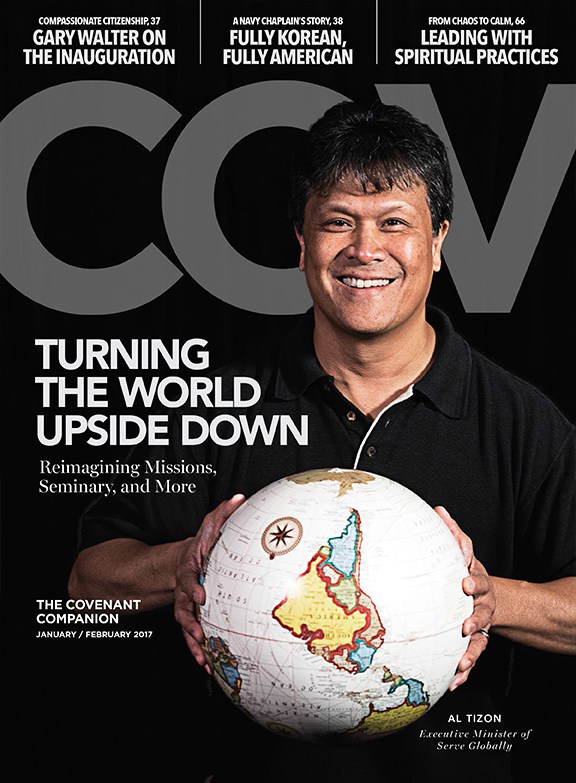
CHICAGO, IL (February 5, 2016) — Many Covenanters routinely share links to social media articles and videos with one another that Covenant News Service believes may be of interest to others. Each Friday we post five of them. Following is a sample of those submissions—their inclusion does not represent an endorsement by the Covenant of any views expressed.
How Whitney Houston Remade the Star-Spangled Banner
It’s hard to believe that 25 years have passed since Whitney Houston performed her rendition of the national anthem at the 1991 Super Bowl. It was a thrilling, iconic moment. With the United States engaged in the first Gulf War, Houston came out in a white tracksuit and gave the performance against which others have since been compared.
The writer concedes that Houston pre-recorded the song, which many artists did at the time, but adds that she basically sang it in one take in the studio just moments after seeing the arrangement for the first time. She also sang it live on a TV special several weeks later.
From the article: “Houston’s rendition of the anthem is studded with vocal gems and remains a master class in vocal prowess. Its hold on us, however, can be attributed, ultimately, to a single powerful effect: the startlingly beautiful sound Houston makes when she sings the word ‘free.’ This was a sound for the ages.”
New Collar Promises to Keep Athletes’ Brains from “Sloshing” during Impact
Woodpeckers and longhorn sheep take a lot of blows to the head, but they’re able to regulate their body to keep their brains from banging against their skulls. Rather than continuing to try to adapt football helmets, one group of scientists are testing u-shaped collars that show promise in keeping the brain where it’s supposed to be.
 From the article: “It applies gentle compression (about as much as a necktie, says co-inventor Julian Bailes) to the jugular veins, slightly reducing the amount of blood flowing back to the heart after every beat. Tests in rat models suggest that such jugular compression leads to reduced signs of brain injury, and the researchers hypothesize that this is due to less sloshing. Myer is now designing further animal studies using pigs.”
From the article: “It applies gentle compression (about as much as a necktie, says co-inventor Julian Bailes) to the jugular veins, slightly reducing the amount of blood flowing back to the heart after every beat. Tests in rat models suggest that such jugular compression leads to reduced signs of brain injury, and the researchers hypothesize that this is due to less sloshing. Myer is now designing further animal studies using pigs.”
Perhaps this will make us feel a little less guilty about sitting at home eating chips and watching multi-millionaires beat their heads together.
Why a Top Food Poisoning Expert Won’t Ever Eat These Foods
The outbreak of E. coli at Chipotle caused several dozen people to get sick, led to the temporary closure of individual restaurants in several states, and sent the company’s stock plunging. But Bill Marler, a lawyer who specializes in food-borne illnesses, says that the problems are much more widespread than people think—and instituting some reforms may be difficult. The article includes an interesting interview with Marler that highlights nonsensical rules, the lack of inspection, and industry pushback.
From the article: “I think there are a lot of things about the food system that the general public would find completely nonsensical—not necessarily frightening, but definitely nonsensical. Like how E. coli is considered an adulterant in hamburgers, but salmonella and many other pathogens are not. How salmonella is allowed on chickens, which the USDA oversees, but salmonella is not allowed in any product that the FDA oversees.”

Why My Kids Weren’t at Kids’ Church
Just because a child doesn’t understand everything during a church service doesn’t mean they should go to children’s church every week. The author makes a great analogy, comparing the experience to taking her preschool daughter to see “The Nutcracker.”
From the article: “Nobody criticized us for forcing her to sit through a long performance filled with imagery and dialogue she couldn’t follow. No one complained about her fidgeting or her outbursts. And nobody questioned whether this was beneficial for her.”
Is It the End of Contemporary Worship?
This post really should be titled something like “Everything Boomers Love and Argue about Is Irrelevant.” A church consultant takes issue with the opinions expressed in two recent blogs on the future of contemporary worship because the “they’re based largely on personal opinion and the facts they cite tend to be about those who ‘left’ the church. There’s no research or facts cited about those who have never been in church.” While worshipers who prefer one style over the other hash it out—and, I’d add have sounded like broken records for decades—the upcoming generation, for the most part, is having none of it.
The general idea of the article isn’t all that new, but those of us who have been around awhile may have a hard time adjusting to the particulars of what this author says is working to pack the pews—like texting during the service.
One Covenant worship leader commented, “For me, the biggest thing is the honesty of the article. I think it nails the simple fact that so many churches (including every church I’ve served in) seem intent on ignoring the basic principles in this article: that music (and preaching!) has far less to do with a growing church than good neighboring; that we need to pay attention to our context if we want to see growth.”
Categories:
News
Comments